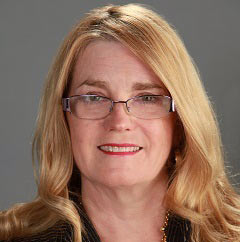C Spire Tackles Digital Divide with Industry Collaboration

As the COVID-19 pandemic made all too clear, extending internet access to underserved areas isn’t just a matter of market growth. With many consumers increasingly reliant on high-speed internet for access to medical care, education, and employment, closing the digital divide has become essential to ensure that people everywhere can participate fully in modern life. To this end, government agencies in the U.S. and overseas have launched numerous initiatives to subsidize and accelerate the rural broadband buildout, from the $20.4 billion Rural Digital Opportunity Fund (RDOF) to the $14.2 billion Affordable Connectivity Program (ACP). Programs like these can help ease concerns about ROI for investments in wireline, fixed wireless, and satellite-based internet access infrastructure—but they may not be enough to ensure the long-term sustainability of rural broadband services.
Internet service providers seeking to develop the rural broadband market face considerable challenges, from the economics of low customer density to permitting challenges for right-of-way access. To recoup investments in fiber optic internet, fixed wireless, fiber-to-the-home (FTTH), and other infrastructure, these companies need to ensure that their costs for deployment, operations, and maintenance won’t outstrip their potential revenue.
In a recent report sponsored by A10 Networks, RCR Wireless News explored the experiences of C Spire, a regional network operator in the U.S., in working to close the digital divide. By working with both customers and industry peers in a collaborative approach to rural broadband expansion, the company offers an example of the innovative business models making high speed internet services available more widely than ever before.
Crowdsourcing Paves the Way for Fiber Optic Internet Adoption
Established in 1988, C Spire provides broadband service to customers in Mississippi, Tennessee, and Alabama. Since 2013, the company has provided fiber-to-the-home (FTTH) to a growing subscriber base across roughly 20 markets encompassing more than 30,000 single family residences—with a billion-dollar investment fueling further expansion.
Prior to entering the market for suburban and rural broadband services, C Spire typically focused on providing high-speed internet service to hospitals, schools, businesses, and large industries where a single fiber optic internet connection can capture significant revenue. The high cost of last-mile fiber-to-the-home infrastructure, combined with the more modest subscription fee for an individual household, reshaped these economics.
In order to ensure sufficient subscriber demand to justify the cost of its fiber optic internet deployment in a given neighborhood or community, C Spire developed an innovative crowdsourcing model. Instead of the traditional approach of building out infrastructure, then hoping enough customers signed up to pay for it, the company solicited customer interest up-front—before its buildout began. This way, C Spire could be confident that homeowner and renter demand would be sufficient to build a profitable business.
Fostering Industry Collaboration Through the Rural Broadband Consortium
The economics of closing the digital divide are made even more challenging by the go-it-alone business model typical of the industry. With this approach, a single internet service provider designs, builds, operates, and maintains the network. While the operator also receives all the resulting internet access revenue, the profitability of the investment is often eroded by its inefficiency. In reality, given the multiple technologies that can be involved in rural broadband connectivity, including fixed wireless, fiber optic internet, 5G, and satellite, it would be rare for a single regional internet service provider to field deep expertise and resources across the full spectrum.
In addition, rural broadband infrastructure is not one-size-fits-all. Different markets have different characteristics in terms of geography and environment, existing infrastructure and internet access adoption, customer density and economics, and so on. To ensure an efficient buildout, operators need the flexibility to choose the right wireline, fixed wireless, and satellite-based tools and technologies for each market they serve—without having to develop their own industry-leading capabilities in each area.
Created by C Spire as a two-year research project, the Rural Broadband Consortium brought together companies including Nokia, Microsoft, Facebook, and others to explore new cooperative models for cost-effective rural broadband deployment. Instead of keeping equipment and internet service providers siloed within specific wireline, fixed wireless, and satellite technologies, the consortium developed a “third-party enablement model” in which multiple parties collaborate to provide service. With this approach, operators can join with partners such as local business owners or homeowner associations; infrastructure providers such as local governments, utility companies, or cooperatives; and emerging or established internet service providers with needed capabilities and toolsets to make rural broadband more cost-effective for all involved.
C Spire continues to play a leading role in efforts to close the digital divide by sharing the findings of the Rural Broadband Consortium with state and local government leaders and encouraging an ongoing discussion about how best to address the challenges of rural broadband.
More Strategies to Close the Digital Divide
In a separate analysis, STL Partners also found several strategies to build a profitable rural broadband business, including creating value-added services, modernizing the core network with cost-effective technologies, and investing in security infrastructure to mitigate risks such as ransomware and Distributed Denial of Service (DDoS) attacks. The STL report, “How Regional ISPs are Bridging the Digital Divide Through Innovation” also cites the value of partnership in closing the digital divide, including working with partners to ensure the availability of technology and security skills for smaller internet service providers, as well as achieving economies of scale through an industry consortium. The analysis includes in-depth case studies of three successful regional service providers and other examples of industry innovation.
The industry is applying innovation and new business models as it strives to close the urgent gap in broadband access and technology.
To learn more about C Spire’s work with the Rural Broadband Consortium, read the RCR Wireless News report, Rural Broadband in the Real World: How one operator is tackling the digital divide.